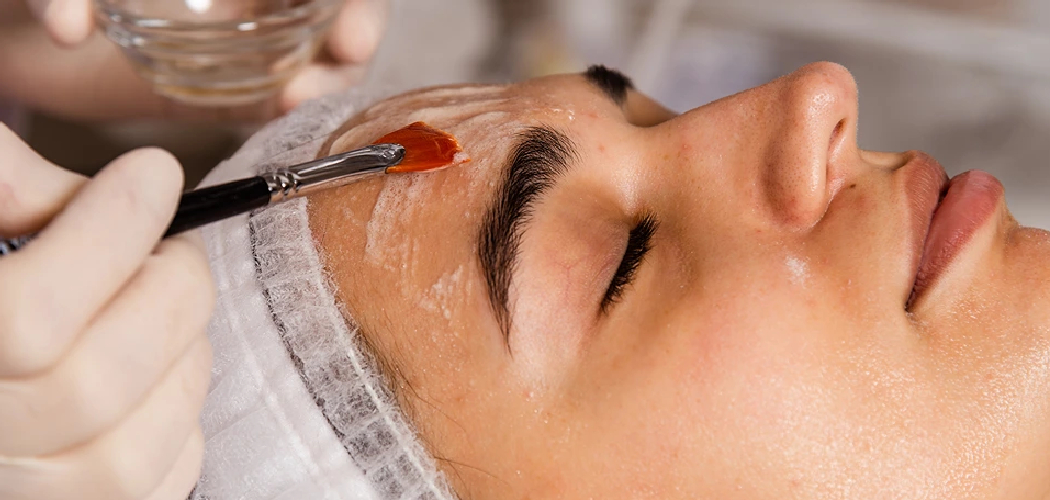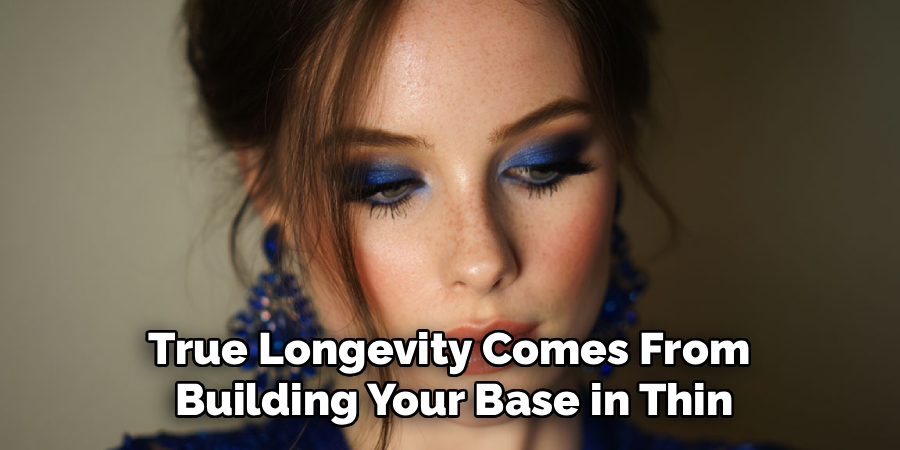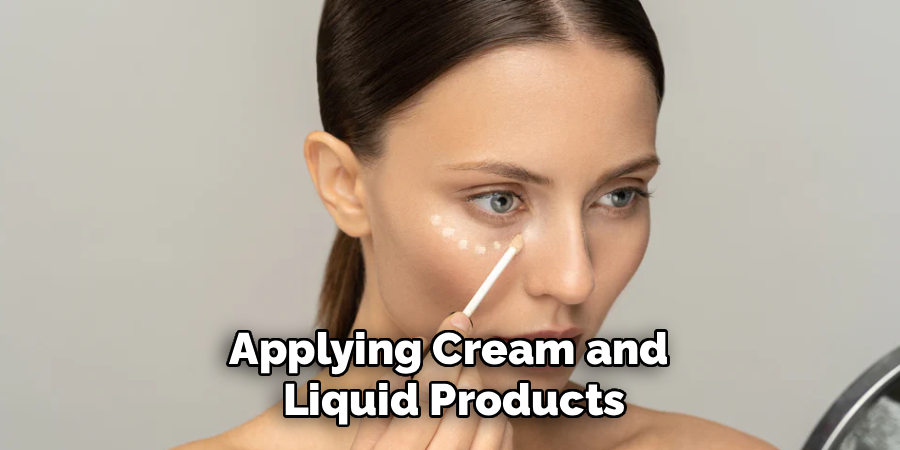Want to know how to keep makeup on all day? The answer isn’t about layering on heavy products or relying on the latest viral setting spray. In reality, makeup longevity starts well before you even reach for your first cosmetic product. It’s the thoughtful steps—prepping your skin for your unique needs, using the right techniques, and paying attention to environmental factors—that make the difference between a look that stays flawless and one that slides away before lunchtime.

In this guide, you’ll learn how to analyze and prep your skin by type, select and sequence primers, foundations, and setting products for maximum wear, and manage environmental obstacles from humidity to masks and sweat. We’ll walk through a detailed, step-by-step process to build a budge-proof base that feels light but lasts, explain how to keep eyes and lips fresh, recommend a practical touch-up kit, and troubleshoot common mistakes (and what to do when things go wrong). Whether your goal is makeup that lasts through a wedding, a long workday, or a summer concert, these professional strategies will help you achieve a polished look that stands the test of time.
Know Your Canvas: Skin Type and Conditions
Before diving into specific products or techniques, you need to start with a true understanding of your skin. After all, recommendations for how to keep makeup on all day will look different for oily, dry, sensitive, and combination skin types.
Oily and Combination Strategies
If you have oily or combination skin, you likely notice foundation breaking down around your nose, chin, or forehead by midday. Choose gentle, gel-based cleansers and lightweight, oil-free moisturizers to control surface slickness. Look for primers with mattifying properties and ingredients like silica or clay, which absorb excess oil. Blotting papers and micro-powders are your allies—use them before and after makeup application to lock in your look. Don’t overdo powder, though; thin, layered application is key.
Normal and Dehydrated Strategies
Normal skin types should focus on balance. A lightweight cream or lotion moisturizer helps lock in hydration. If your skin skews dehydrated, look for humectants like hyaluronic acid in both your skincare and primer. Skip harsh cleansers and opt for gentle ones that protect your skin’s natural barrier. Dewy-finish foundations work well; just be sure to set with a minimal, finely-milled powder to avoid looking flat.
Sensitive and Reactive Considerations
Sensitive skin needs a gentle touch. Choose fragrance-free skincare and primers, and patch-test any new products. Look for soothing ingredients—such as aloe, allantoin, or centella asiatica—that calm redness and help your skin stay comfortable under makeup. Stick to mineral-based SPF and avoid heavy, occlusive formulas.

Skin Prep That Anchors Makeup
Proper skin prep makes a world of difference when trying to keep makeup on all day. It’s not just about moisture—you need a balance between hydrated skin and the right surface texture.
Cleansing and Hydration Balance
Start your routine with a cleanser that targets your unique needs without stripping. Oily skin benefits from a gel-based, pH-balanced cleanser, while dry or mature skin fares better with creamy, nourishing cleansers. After cleansing, mist or pat in a lightweight hydrating toner. Follow with your chosen moisturizer, and remember the motto: less is more. Let each layer fully absorb before moving on. This keeps your surface smooth but not slick, providing the perfect anchor for makeup.
Gripping Primers vs. Blurring Primers
Primers are game changers, but not all are created equal. “Gripping” or “sticky” primers (often infused with ingredients like agave extract or polymers) are ideal for oily or combination skin. They create a gentle, tacky base that grabs onto foundation and helps it resist oil and sweat. Blurring primers, meanwhile, smooth over pores and fine lines, making them better for normal to dry skin types. Use gripping primers in zones that get oily (T-zone), while opting for blurring formulas on areas with texture concerns. Always press—not rub—the primer into your skin for best results.
Targeted SPF That Won’t Pill
Daily SPF is non-negotiable, but many formulas can disrupt makeup wear. Look for light, gel-based or fluid mineral sunscreens that absorb quickly and don’t leave residue. Apply thin layers and allow at least five minutes to set before makeup. If you experience pilling, try skipping moisturizer on humid days and let SPF pull double duty.
Step-by-Step Guide: How to Keep Makeup on All Day
True longevity comes from building your base in thin, strategic layers. Here’s how to keep makeup on all day using a professional’s approach:

Step 1: Prime With Intent
Apply primer only where you need it. Press mattifying or gripping primer onto the forehead, nose, and chin if those are your shiny spots. Smooth blurring primer over cheeks or other textured areas. Wait a minute to let primers set and grip the skin.
Step 2: Apply Foundation in Thin Layers
Use a damp sponge or foundation brush to apply your base. Dot product on the center of your face and blend outward, working in small sections. Build coverage in thin layers; this is far more effective for longevity than relying on one thick coat, which tends to separate and slide off. Allow each layer to “dry down” for a few seconds before adding more.
Step 3: Correct/Conceal and Allow Dry-Down
Only after your foundation has settled should you move in with concealer. Spot-correct under the eyes, around the nose, and over any blemishes. Less is more—too much product can lead to creasing. Pat the concealer gently and give it a good minute to set before moving on.
Step 4: Set With Puff and Micro-Powder
Rather than dusting powder loosely, use a powder puff or a dense brush to press a micro-fine loose powder into the skin, especially in areas prone to oil. Use a rolling and pressing motion for a longer-lasting set. For drier skins, sweep powder only on high-shine zones.
Step 5: Seal With Setting Spray, Then Spot-Powder
Hold your setting spray 8–12 inches from your face and mist with your eyes closed. Let the spray dry for a minute, then gently touch up the T-zone with a tiny bit of powder if you see any shine peeking through. This final layer “locks” everything into place.
Layering Logic: Order, Timing, and Textures
Getting the order right makes all the difference in how long your makeup stays put—so does knowing when to pause and let things set.

Cream-Then-Powder Interactions
Applying cream and liquid products before powders is vital if you want seamless blending and lasting performance. Start with all creams—foundation, contour, blush—then set with powders. Going in reverse can create patchiness or cause makeup to shift as the day goes on.
Dry-Down Checkpoints
Between each step, give your products a few moments to dry. For foundation and concealer, wait at least 30 seconds before applying powder. If you layer too quickly, moisture can get trapped, shortening the life of your look. Use this time to prep your next product or double-check your blending.
When to Skip Layers
Sometimes less is more. On particularly humid days or for skin prone to excess oil, consider skipping moisturizer or switching to a hydrating serum. If you’re in a rush, prioritize a gripping primer and lightweight foundation with built-in sunscreen. Avoid layering so many products that your skin starts to “push back,” causing pilling or separation.
Eye and Lip Longevity
Keeping makeup on all day isn’t just about your base—your eyes and lips deserve special attention, too.
Eye Primer, Tightlining, and Tubing Mascara
Start all eye looks with a dedicated eyelid primer. This prevents shadow creasing and helps pigment stay vibrant. Try tightlining with a waterproof gel pencil for definition that won’t smudge. For mascara, tubing formulas (which build “tubes” around each lash) are the gold standard—they resist flaking, smearing, and are easy to remove with warm water.
Lip Liner, Blotting, and Long-Wear Finishes
Outline and fill in your lips with a neutral liner before adding any color. This helps lipstick grip and fade evenly. For longer wear, apply your lipstick, blot with tissue, and reapply—a classic makeup artist trick for doubling longevity. Consider matte or satin long-wear finishes over glossy formulas.
Handling Transfer-Prone Areas
Some parts of the face—like the inner eye corners or the edges of your lips—are naturally prone to transfer. Use a pointed cotton bud to clean up right after application, and dab a bit of setting powder on the borders. Resisting the urge to layer too much product helps minimize smudging.

Sweat, Heat, and Environment Management
No matter how well you prep, the environment can test your makeup’s endurance. Here’s how to keep it in place:
Antiperspirant Placement and Blotting
A pro tip: clear, solid antiperspirant can help behind the ears, on the hairline, or under the jawline to minimize sweat transfer in hot, humid weather. Blotting is your friend—use blotting papers or a clean tissue to gently absorb moisture during the day, never rubbing.
Weather-Proofing Techniques
Layering is key. In extreme humidity, try “sandwiching” setting spray: mist your face before and after powder. For dry, windy conditions, lock in moisture with a light hydrating mist and opt for creamier formulas (but set them lightly). Always carry small touch-up tools with you if you know you’ll be outdoors.
Handling Masks, Collars, and Friction
Modern life means friction—think mask-wearing, shirt changes, or phone calls pressed to the cheek. To avoid lifting product, opt for mask-friendly, transfer-resistant formulas and spray a little extra setting spray on the lower face if you’ll be wearing a mask. For outfits with tight collars, change clothes before applying makeup or use a lightweight setting spray to “seal” around the jawline and hairline.
The Perfect Touch-Up Kit
All-day wear means being prepared for quick touch-ups without caking or overloading your face.
Blotting Tools, Mini Puff, Micro-Powder
Keep a slim touch-up kit: oil-absorbing sheets, a small powder puff, and a travel-sized jar of micro-fine loose powder. This combo controls shine and refreshes your base with minimal product buildup.
Setting Spray Decant and Cotton Buds
Decant a bit of your favorite setting spray into a small spray bottle—it’s perfect for mid-day refreshes. Cotton buds are multi-taskers: use them to fix mascara smudges, smooth lipstick edges, or powder creases.
What to Leave Out to Avoid Caking
Don’t pack heavy creams or extra foundation. Skip products that encourage over-layering on the go. Your core touch-up kit should refresh, not rebuild your makeup.
Common Mistakes and Fixes
Everyone makes mistakes, but most are easy to fix if you know what to look for.
Over-Layering and Skipping Dry-Down
Too many products, applied too quickly, is a sure recipe for slip and slide. To fix, blot off excess oil or product, then use a minimal powder or setting spray to get things back in line.
Wrong Primer for Your Base
Using a silicone primer with a water-based foundation can cause separation. Always try to match base types: silicone with silicone, water with water. If you notice products balling up or not sitting right, this is often the culprit.
Spraying Too Much, Too Close
A heavy, close hit of setting spray can leave droplets or sticky patches. Hold the bottle at least eight inches away and use a fine mist. If overdone, blot lightly with tissue and fan-dry.

Conclusion
Mastering how to keep makeup on all day is less about piling on more products and more about timing, technique, and understanding your skin. By prepping with care, applying thin-layered products, and pausing at each step, you ensure your makeup lasts without feeling heavy. With practice, you’ll know exactly what your skin needs—whether you’re braving summer heat or preparing for a long, demanding day. Remember: flawless wear is as much about the process as the products. You now have the tools and knowledge to create a lightweight, polished look that holds up, boosts your confidence, and stays in place—all day long.
About the Author
Jane Hubbard is a passionate beauty expert with a wealth of experience in makeup, hair, and overall beauty techniques. After years of working as a hairdresser specialist, she followed her entrepreneurial spirit and started her own consultancy business.
Jane has always been driven by her desire to help others feel confident in their own skin, and she does this by sharing her knowledge, experiences, and practical beauty tips. Through her consultancy, she empowers individuals to embrace their unique beauty, offering tailored guidance that boosts both self-esteem and personal style.
Professional Focus
- Specializes in makeup, hairstyling, and beauty consulting.
- Provides personalized beauty advice, tips, and techniques to help individuals feel confident in their appearance.
- Dedicated to staying up-to-date with the latest industry trends and developments.
- Passionate about creating a comfortable and empowering experience for every client.
Education History
- University of Craft and Design – Bachelor of Fine Arts (BFA) in Woodworking and Furniture Design
- Woodworking Apprenticeships – Extensive hands-on training with skilled craftsmen to refine carpentry and furniture making techniques
- Online Courses & Masterclasses – Continued education in advanced woodworking techniques, design principles, and specialized tools
Expertise:
- Makeup artistry, hairstyling, and beauty consulting.
- Personalized beauty techniques to enhance confidence and self-expression.
- Educating clients on how to maintain their beauty routines at home.
